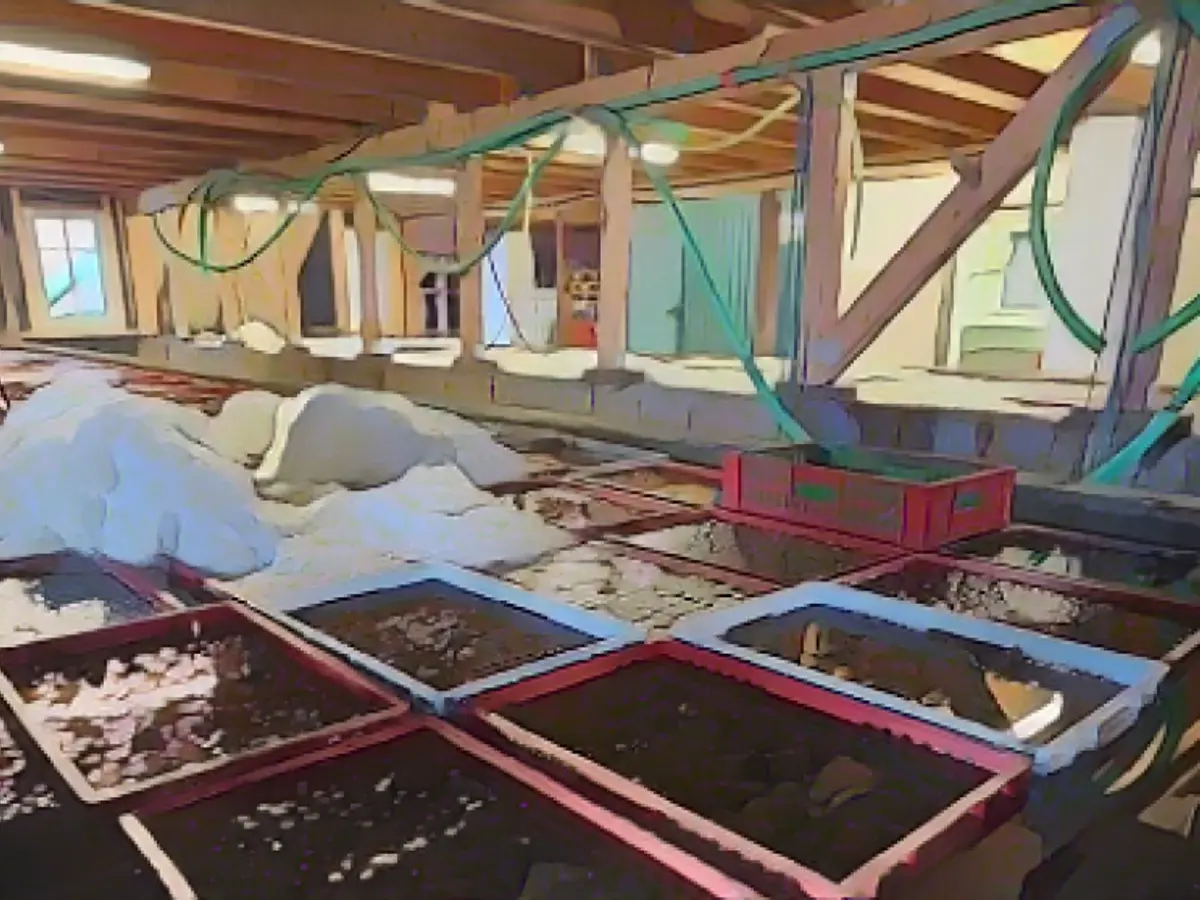Oystercalamity looms for Sylt's slurpers - 3.5 million shellfish at risk
Sylt's renowned oysters might disappear from the menu if the frigid temperatures persist. This disastrous scenario would be a double whammy for Dittmeyer's Austern-Compagnie and the seafood-loving community.
Three and a half million tiny oysters, Sylt's cherished delicacy, may fall prey to the chilling temperatures. Operations manager Christopher Bohlig, 46, paints a grim picture: "If temperatures continue hovering below zero, I fear the loss of 3.5 million oysters. This would mean no more oysters in 2025, 2026, or 2027." The financial implications would be heartbreaking: millions in lost revenue for the shellfish specialists.

The root of this chilling economic crisis traces back to regulations introduced in 2019 for oyster farming. Now, farmers can no longer use seeds from Ireland with a weight of 30 to 50 grams, a common practice in the previous decades.
As per new regulations, only mini-oysters from a closed hatchery can now be procured. The objective of this policy is to shield against the introduction of invasive foreign species. Yet, it has led to grave consequences for Sylt's oyster farmers.
Christopher Bohlig clarifies: "Now, each new generation of oysters needs at least four to five years to mature, whereas previously it took only one to two years." This change has resulted in an unprecedented surplus of three and a half million tiny oysters.

From the mudflats to winter storage
These fragile juvenile oysters are now threatened by the formation of ice. While freezing temperatures are not the main concern, ice sheets are: "Ice floes destroy the oysters."
Bohlig and his team are racing against time using tractors to collect the shellfish from the mudflats between List and Kampen. They meticulously gather the smaller oysters, which are housed in net bags.
"We have already retrieved a million oysters from the mudflats for winter storage," Bohlig admits. "We don't have the capacity to store an additional three and a half million oysters. Our current stock is astronomical."
In total, the oyster farm boasts up to five million shellfish. However, not every oyster makes it to the sales counter. Some perish before reaching maturity.
The unexpected iciness of the situation
"Mild winters have hidden the magnitude of this problem," Bohlig says. The resurgence of harsh winters now threatens the delicate oysters goldmine.
But Bohlig remains hopeful, banking on the mercury rising again.
Bonus Facts
- Top Sylt gastronomy is still dishing out delectable seafood, including oysters, despite the winter's biting chill.
- Locally harvested oysters from Dittmeyer's Austern-Compagnie face the possibility of canceling the popular annual ice fishing event on Sylt due to an abundance of small oysters.
Sources:
Insightful Details
A warm winter masks the grim reality of stressful environmental conditions for oysters. While coastal temperatures below zero are not uncommon, the combination of cold water and ice floes can result in high mortality rates. Additionally, changes in regulation forced oyster farmers to adopt new seeding practices, which have resulted in a major surplus of juvenile oysters. Agricultural and environmental policies that balance species protection with economic sustainability present significant challenges for the oyster farming industry.






